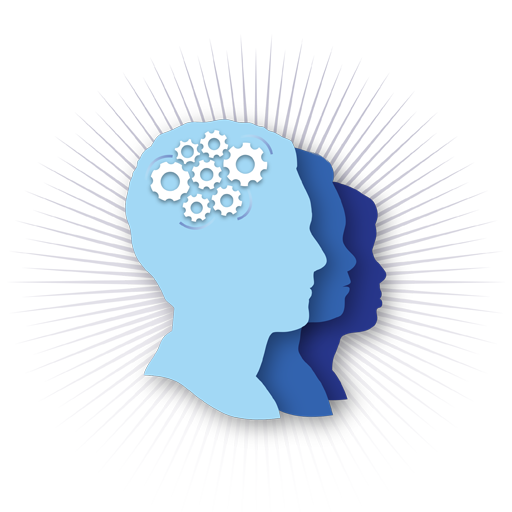
Depression Part II: Therapeutic Treatment Options
Some say the depression is an affliction that is exasperated, if not caused by our modern life style. Nevertheless, whatever the cause, therapists and physicians now have pharmaceutical options and well as traditional talk therapy to help patients suffering from this malady. This blog examines the different choices available to help those who are depressed.
Learn More
Chicago Dyslexia and Attention Deficit Hyperactivity Disorder
What is it Like to Have Both Dyslexia and Attention Deficit Hyperactivity Disorder (ADHD)?
Living with either dyslexia or Attention Deficit Hyperactivity Disorder (ADHD), let alone both of them, can be hard, unless you really know how to advocate for yourself and unless you have supportive people in your life. Dyslexia and ADHD are both conditions that make traditional school environments a challenge; in fact, in earlier times, many of the diagnostic criteria for ADHD were based on teachers’ perceptions of children’s behavior. As adults, people with dyslexia and Attention Deficit Disorders can choose career paths that play to their strengths and find social groups of people who understand what they think, but the school years can be really hard, especially when schools or parents act like the dyslexia or ADHD is a weakness on the child’s part, or, worse, intentional misbehavior.
Dyslexia is defined as difficulty with reading, especially difficulty with recognizing and sounding out words on the page. About one out of every 20 Americans has been diagnosed with dyslexia, but it may affect one of out every five people to some degree. Famous people with dyslexia include actors Jennifer Aniston, Salma Hayek, Anthony Hopkins, and Tom Cruise, inventor Alexander Graham Bell, personal computing pioneer Steve Jobs, author Lewis Carroll, Olympic athlete Greg Louganis, and polymath Leonardo da Vinci.
With appropriate support to manage their dyslexia, it is possible for children with dyslexia to learn to read. In fact, some people with dyslexia even learn to read two different languages that use two different alphabets. They need to be taught strategies about associating graphemes (letters) with phonemes (sounds), and some people with dyslexia find it helpful to memorize the shapes of words rather than thinking about the shapes of individual letters. Some college students with dyslexia carry marker boards so that they can associate the sounds of words with the way it feels to write them. Typefaces such as OpenDyslexic have been designed specifically to reduce similarities between letters, making them easier for people with dyslexia to read. All of this supports the idea that it is useful not to think of dyslexia as a disorder, but rather to consider that there is more than one way to learn to read.
Likewise, it is useful to think of Attention Deficit Disorders (ADD or ADHD) just as a way in which a person’s mind works, rather than a problem in the way a person’s mind works. One young man with ADHD likes to describe it not as “attention deficit disorder” but as “awesome hunter-gatherer brain”, based on the theory that the symptoms of ADHD, such as the ability for a slight movement far off in the distance to draw one’s attention, are useful adaptations. That tiny stimulus that today’s classroom teachers call a distraction was, in ancient times, a potential danger or a potential meal.
Today, counseling and learning support are the most often used methods of managing ADHD. If, even with counseling and learning support, children are not able to manage the symptoms of ADHD in a way that parents and counselors consider acceptable, they may refer the child to a physician who may prescribe medications to reduce the symptoms of ADHD. Whether to take medications and which ones to take varies from one child to the next, and the decision to start and continue medication should be made by the child, his or her family, and the physician. Classroom environments in which children are encouraged to stand up and walk around during class activities are more conducive to learning for children with ADHD than classrooms in which they are required to sit still for long periods.
If your child has been diagnosed with dyslexia or ADHD, or if you or the child’s teacher thinks your child should be tested, contact a learning center that specializes in dyslexia, Attention Deficit Hyperactivity Disorder (ADD/ADHD), and other learning difficulties. Cognitive Solutions Learning Center in Chicago offers these services at www.helpforld.com
Learn More

Depression: Causes, Symptoms, and Treatment Part I
Depression: Causes, Symptoms, and Treatment – Part I of III
Depression: What’s it all about?
By
Ari Goldstein, Ph.D. Educational Psychologist
“I have had issues with depression all my life, and it’s probably true to say there was a tendency towards it even when I was very young, during my schooldays. There was often – and this is quite common with comics – a sense of not feeling as if I belonged anywhere.”
– Jack Dee
“Every man has his secret sorrows which the world knows not; and often times we call a man cold when he is only sad.”
– Henry Wadsworth Longfellow
“If what I feel were equally distributed to the whole human family, there would not be one cheerful face on the earth. Whether I shall ever be better, I cannot tell.”
– Abraham Lincoln
“It’s so difficult to describe [depression] to someone who’s never been there, because it’s not sadness. But it’s that cold absence of feeling — that really hollowed-out feeling.”
– J.K. Rowling
If any of the feelings described above sound all too familiar, you may at some point in your life experienced a form of depression. As you can see, you’re not alone. Presidents, poets, best-selling authors and even comedians have been depressed, too.
More than 15 million Americans over the age of 18 suffer from depression every year.
According to the National Institute of Mental Health, “Depression is a common but serious illness, and most who experience it need treatment to get better.” Although 80 percent of people treated for depression experience relief within four to six weeks, two-thirds of those who need treatment never get it. This is no doubt a factor in suicide being the second leading cause of death among Americans between the ages of 15 and 44.
The American Psychiatric Association has defined three major types of depression.
In the Diagnostic and Statistical Manual of Mental Disorders (DSM), the APA describes three categories of depression all of which involve the following combination of symptoms to a greater or less degree:
– Trouble sleeping or excessive sleeping
– A dramatic change in appetite, often with weight gain or loss
– Fatigue and lack of energy
– Feelings of worthlessness, self-hate, and inappropriate guilt
– Extreme difficulty concentrating
– Agitation, restlessness, and irritability
– Inactivity and withdrawal from usual activities
– Feelings of hopelessness and helplessness
– Recurring thoughts of death or suicide
• Major Depressive Disorder or Clinical Depression – the patient feels sad and lacks interest in previously pleasurable activities. This mood lasts almost all day, every day for two
weeks or longer while the patient suffers from four or more of the symptoms mentioned above.
• Persistent Depressive Disorder (PDD) or Dysthymia – the patient experiences persistent depression for two or more years although, in some cases, sadness may seem to lift for a time.
Still, he or she is in an almost constantly depressed mood and experiences decreased appetite, low energy, lack of self-esteem, sleep problems and a feeling of hopelessness.
• Manic Depression (also called Bipolar Disorder) – the patient’s mood swings between two extremes – depression and mania. In some cases, the mania phase is dominant and felt as either
euphoria or irritability. Manic episodes may last for a week or longer during which time the patient may experience at least three of the symptoms mentioned above. If these symptoms
are severe enough or include psychotic aspects such as hallucinations and delusions, hospitalization may be necessary to prevent the patient from hurting themselves and others.
The causes of depression are as individual as the people who experience it.
Research shows that depression can be caused by genetics, environment, alterations in biochemistry or an illness of mind or body. Recent studies have discovered some structural differences between the brains of some people suffering from depression and those who do not. People who are depressed seem to have a smaller hippocampus than those who are not depressed. Depression sufferers also seem to produce an excessive amount of the stress hormone cortisol. This discovery has led some scientists to theorize that cortisol is toxic to the hippocampus and may affect the hippocampus’ ability to produce Serotonin. Whether or not this is the case, it is clear that depression is a highly complex malady that is influenced by a multitude of factors including:
• Biological Causes
Research seems to indicate people who have a close family member with depression are up to three times more likely to become depressed themselves.4 Studies using twins as subjects
found that if one identical twin was depressed, 76% of the time the other sibling also succumbed.
• Medication
Medication taken for such ailments as high blood pressure, cancer and Parkinson disease can also affect the balance of serotonin in the system. This, in turn, can lead to depression in
patients already coping with these illnesses. In fact, finding out you have a serious illness can be a depression stressor by itself.
• Emotional Trauma
The death of a loved one, divorce and enduring conflict in the home or at work can also push someone over the edge into depression. So can past traumas such as sex abuse or being
assaulted in childhood. Men are particularly susceptible to depression due to a job loss or change in social status that can damage their sense of personal identity and self-worth.
• Life Changes
Even life changes that are anticipated and seemingly desired such as moving into a new home, graduating college or getting married can, in some individuals, trigger a major depression.
Depression differs between generations and genders.
Depression can strike at any age – from infancy to old age. While it is always a devastating condition, there are some differences in how it manifests itself in each sex and age groups. Statistically, depression afflicts women twice as often as men. However, this could be because the condition is often under diagnosed in men and reveals more about our social mores than our medical care. In a society that equates masculinity with self-reliance and emotional self-control, seeking treatment for depression maybe out of sync with social norms. Some men are reluctant to even talk about their emotions let alone admit to feeling overwhelmed by them. Even if a physician does diagnosis a man as depressed, that individual may refuse to accept treatment. Instead, they may try to self-medicate with alcohol and drugs, which not only masks the symptoms of clinical depression but can exacerbate the problem.
Depressed men are more prone to rage and violence than women and may display various uncharacteristic behaviors such as taking risks in their sexual partners or driving too fast. They may use work or sports as an escape from their feelings, becoming overly involved in these activities. Studies also indicate that men seem to think about suicide more frequently than women do.
Women, on the other hand, may be more prone to depression because of biological differences.
At various stages in a woman’s life, her hormones undergo significant changes – preparing for pregnancy, going through pregnancy and finally, facing the end of fertility during menopause. In fact, during every monthly menstrual cycle, most women go through several days of moodiness and physical discomfort often referred to as Premenstrual Syndrome or PMS. A small percentage of women have Premenstrual Dysphoric Disorder (PMDD) in which these symptoms are so excessive they affect the sufferer’s ability to function at work and at home. Of course, not all women become depressed when they menstruate, even if they suffer from PMDD, so these hormonal changes do not necessarily cause depression by themselves. However, research still remains to be done on just what effect estrogen, progesterone and other hormones involved with menstruation have on brain function.
Below is a summary of how women may experience depression during the various phases of their lives:
• Pregnancy
Hormonal changes can contribute to overwhelming sadness even at a time when feelings of happiness are supposed to be the norm. The fact is, pregnancy can be a mixed blessing for many
women in our society. The mother-to-be may fear the pain of delivery or, worse, having a miscarriage. She may lack a support system to help her raise the baby or be dealing with a
failing relationship with the baby’s father. Moreover, even in the best of circumstances, the increased and ongoing responsibilities a woman faces in raising a baby can be a major
stressor.
• Postpartum Depression
Half of all new mothers experience feelings of sadness, anger, and irritability shortly after giving birth. For most women these negative feelings usually dissipate in a week or two
but for some they can become extremely intense and even lead to thoughts of hurting the baby and suicide. This condition is called postpartum depression and it may be due to excessive
fluctuation of hormones along with a genetic tendency to depression. Whatever its cause, it is very serious and needs immediate treatment.
• Menopause
Hormones also play a part in causing depression later in life. In addition to enduring the physical discomfort of hot flashes, older women may feel they are less desirable sexually to
their husbands just as their children are growing up and leaving to start families of their own. These life changes coupled with a fluctuation and drop in estrogen levels can put some
women at greater risk for clinical depression.
Social Pressures may also be why women seem to suffer from depression more than men do.
In our society women are the ultimate multi-taskers and frequently hold down full time jobs while being the primary – sometimes the only – caregiver for young children and/or senior family members. In addition, a woman may have to cope with sexual and physical abuse, not to mention the very real issues of inequality of power, status and compensation in the workplace. Any one of these situations could trigger a depression. Yet all too frequently, a woman may have to deal with two or more of these stressors simultaneously.
Even young children can experience depression.
In the very young, symptoms of depression include crying for no reason and restlessness, while in preschoolers, they may be manifested as irritability and aggression. As children mature, they may experience a sense of apathy, low energy and listlessness at school and even during activities, they usually love. Once adolescence is reached, symptoms tend to resemble those in adults more closely.
Depressed kids aren’t just “acting up.”
In our culture, children are the very symbols of hope and joy so the idea that they experience the hopelessness and alienation of depression seems counter-intuitive. Consequently, parents and teachers may overlook the signs of this illness putting the symptoms down to “kids being kids.” Yet children who are “act outing” and showing anger and aggressiveness may be as depressed as an adult who is acting sad and blue.
There are no special tests to identify depression in youngsters.
If a child exhibits the systems of depression for two weeks or more he or she should be taken to a doctor to make sure they’re not suffering from a physical ailment requiring medication. Once physical causes have been ruled out, a mental health evaluation can be made based on interviews with the child and information from parents, teachers, friends and classmates.
Research continues on the symptoms and causes of depression.
For example, just recently, a research team led by Professor Bernhard Baune, Head of Psychiatry at University of Adelaide reviewed a growing body of evidence indicating that certain types of genes effect the working of the brain and surrounding tissues during depression.5 Their recently published findings not only support multiple theories of the underlying genetic causes of depression, but highlight one gene in particular – PXMP2. PXMP2, which plays a role in breaking down fatty acids in the body and converting them to energy, seems to be expressed during depression. Baune’s team is investigating the link between PXMP2, its function in the metabolism and depression.
“Depression is much more complex than most people think, and it includes dysfunction at multiple biological levels, from genes to brain regions, and blood circulating through the body,” says Professor Baune. “The state of depression can also change over time, it goes through various phases and it may present with a large range of symptoms.” Baune’s research shows support for the wide range of theories that different genes may play a role in depression, including those that regulate serotonin, melatonin and the immune system, among many others. “But,” he claims, “PXMP2 still represents a very strong, new target for future research programs.”
This is, no doubt, just one of many discoveries that will lead us to a better understanding of depression and why it debilitates so many. Next month, we’ll explore the treatment options for depression past, present and future.
References
1 Facts, National Network of Depression Centers, http://www.nndc.org/the-facts/ (2014)
2 “Depression: What You Need to Know,” National Institute of Mental Health, http://www.nimh.nih.gov/health/publications/depression-what-you-need-to-know-12-2015/index.shtml (2016)
3 ”Stressing the Hippocampus: Why It Matters,” http://blogs.scientificamerican.com/news-blog/stressing-the-hippocampus-why-it-ma/ (2008)
4 Katherine Kam, “Depression When it’s all in the Family,” WebMD, http://www.webmd.com/depression/features/depression-when-its-all-in-the-family (2016)
5 “Faulty Gene Linked to Depression and Cardiovascular Disease,” Science Daily, https://www.sciencedaily.com/releases/2016/09/160913115633.htm (Sept. 16, 2016)
Learn More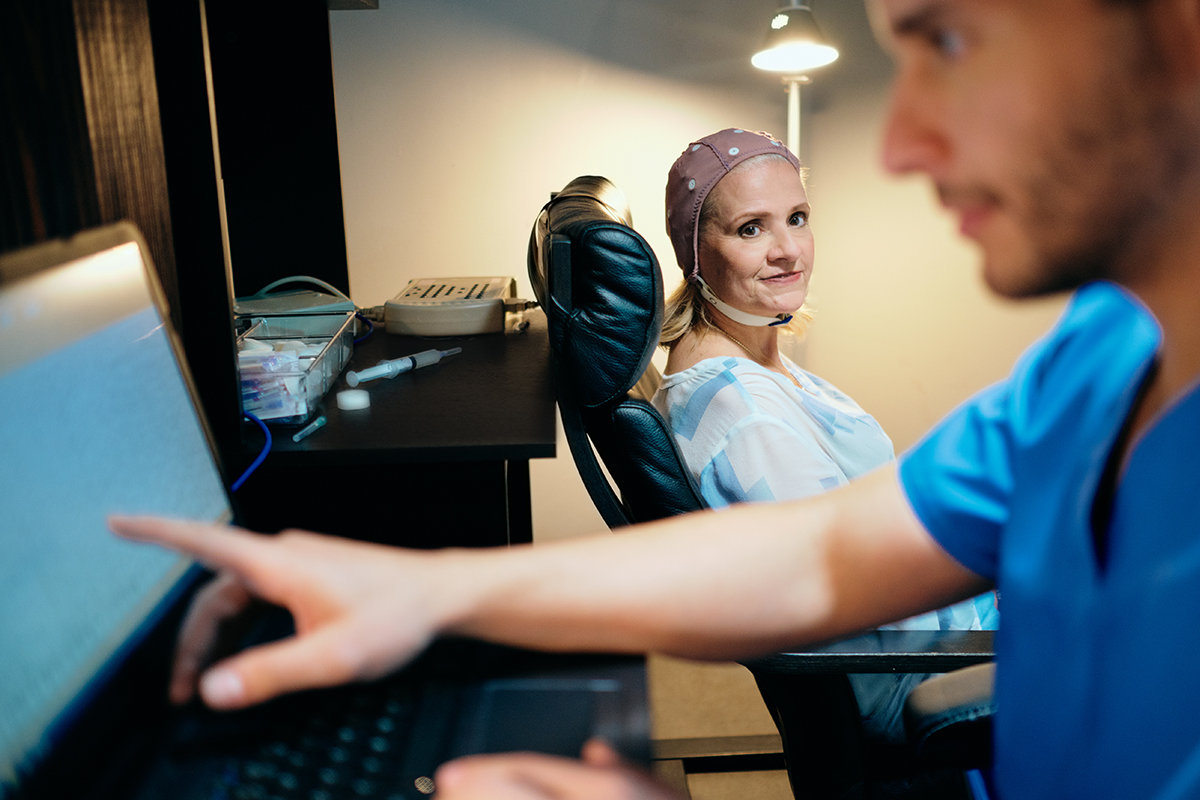
The History of Neurofeedback: Part III
The History of Neurofeedback: Part III
By Ari Goldstein, Ph.D.
Educational Psychologist, Chicago Illinois
Ever since the 1970’s, when scientists like Dr. Barry Sterman and Dr. Joe Kamiya first demonstrated that patients with epilepsy could avoid seizures by regulating their own brain activity, quantitative electroencephalography, also called neurofeedback, has had a place in medicine. Later, when Dr. Joel Lubar and others demonstrated that neurofeedback was also effective in treating children and young adults with attention-deficit hyperactivity disorder (ADHD), pediatricians and educators took notice of it as well.
Yet traditional health care providers remained skeptical about neurofeedback.
Unlike pharmaceuticals, the effectiveness of neurofeedback therapy has been hard to prove via traditional tests that include blind studies and large groups of subjects. The result has been that psychiatrists and MDs have been slow to consider neurofeedback for their patients, relying instead on “proven” pharmaceuticals such as Vimpat, Zoloft, Ritalin and similar medications. Many seemed to feel that the anecdotal histories of patients who were helped by neurofeedback could just have been the “exceptions that prove the rule” rather than typical of a whole groups of people with similar disorders.
But in the 1990’s, research began to catch up with anecdotal findings.
In 1990, the Congress of the United States passed Joint Resolution 174, designating the period from January 1, 1990 to December 31, 2000, as the “Decade of the Brain.” This legislation, signed by President George H. Bush, signified a united effort of national resources including the Library of Congress and the National Institute of Mental Health.
Dedicated to enhancing public awareness of the benefits to be derived from brain research, this legislation provided new funding and enlisted the support of both the public and private sectors. As a result, researchers and scientists around the country were able to pursue advanced investigations of brain function, examine the causes of brain disorders more closely and develop more options for treating them.
One result was Functional Magnetic Resonance Imaging (fMRI), a new measure of brain activity.
This cutting-edge technology uses a functional neuroimaging procedure that can measure brain activity by noting changes associated with the way blood flows in the brain. Inspired by the discovery that cerebral blood flow and neuronal activation are connected, this technology was able to correlate the increase in brain activity to an increase in blood flow to certain areas of the brain. When Functional Magnetic Resonance Imaging (rtMRI) was used to measure brain activity in real time, the results seemed to support some of the claims made about the effectiveness of neurofeedback therapy.
Thus, the National Center for Biotechnology Information revealed that “several groups have reported successful application of rtfMRI to modify cognitive and behavioral processes relevant for the treatment of clinical disorders.1” The article containing this quote goes on to note that because of a small sample size and lack of critical control conditions these results could not be regarded as definitive. “Nevertheless, this important early work supports the investment in RCTs of rtfMRI for the treatment of some brain disorders. 1”
The mainstream press also took note of neurofeedback’s effectiveness.
In a piece on neurofeedback that ran in the Health Science section of the Washington Post, author Arlene Kardis declared, “Researchers who endorse the technique say they don’t know exactly how it works but they say the changes in brain waves result in improved ability to focus and relax.”2 The Kardis’ article also demonstrated that the therapy is being used to treat a wide range of conditions from PTSD in veterans to ADHD in school children and adults.
Neurofeedback has been used for several years by Homecoming for Veterans, a national outreach program composed of clinicians across the country who treat veterans suffering from PTSD and other brain conditions free of charge. Hundreds of American veterans who have enjoyed these services claim that they were able to get their lives back on track again, thanks to this therapy.3
Traditional medicine becomes more accepting of neurofeedback
After the Decade of the Brain, several professional associations which had previously been skeptical about neurofeedback, seemed more open to the possibility that it offered a potential alternative to pharmaceuticals to treat brain disorders. In a cover story from the American Psychology Association web site, the authors postulate, “Early studies indicate that feedback with real-time functional magnetic resonance imaging (fMRI) could help in treating clinical disorders including depression, schizophrenia, addiction and chronic pain.” 4
Another sign that medical professionals were more open to accepting the potential of neurofeedback recently came from the prestigious American Association of Peditricans. A website article on an AAP study of 104 children with Attention Deficit Hyperactivity Disorder (ADHD) reported, “Neurofeedback, a type of training using a computer program for children with attention-deficit/hyperactivity disorder (ADHD), can contribute to lasting improvements for these children.”5
As you can see, Neurofeedback is now being used to treat a host of conditions in patients of all ages. We’re sure that this is just the beginning as the Decade of the Brain gives way to a Millennium of Mindfulness – full of new developments, new discoveries and new solutions for patients seeking happier, healthier and more fulfilling lives.
If you’d like to learn more about how neurofeedback can help depression, anxiety, learning disabilities, Attention Deficit Disorders, post-traumatic stress disorder and more please contact us for a consultation.
References
1 “Optimizing real time fMRI neurofeedback for therapeutic discovery and development,”
PubMedGove, http://www.ncbi.nlm.nih.gov/pubmed/25161891, (July 10, 2014)
2 Arlene Kardis, “Therapists are Using Neurofeedback to Treat ADHD, PTSD and Other Conditions,” Washington Post, https://www.washingtonpost.com/national/health-science/therapists-are-using-neurofeedback-to-treat-adhd-ptsd-and-other-conditions/2015/01/16/b38e6cee-5ec3-11e4-91f7-5d89b5e8c251_story.html, (January 2015)
3 Rachel Weick, “Neurofeedback Treats Veterans with PTSD,” http://www.grbj.com/articles/79745-neurofeedback-treats-veterans-with-ptsd, (May 23, 2014)
4 “Positive feedback,” American Psychological Association, Monitor on Psychology http://www.apa.org/monitor/2016/03/cover-feedback.aspx, (March 2016)
5 “In-School NeurofeedbackTraining for ADHD: Sustained Improvement From a Randomized Control Trial,” American Academy of Pediatrics://www.aap.org/en-us/about-the-aap/aap-press-room/pages/computer-feedback-can-help-students-with-adhd.aspx?nfstatus=401&nftoken=00000000-0000-0000-0000-000000000000&nfstatusdescription=ERROR:+No+local+token, (February 17, 2014)
Learn More
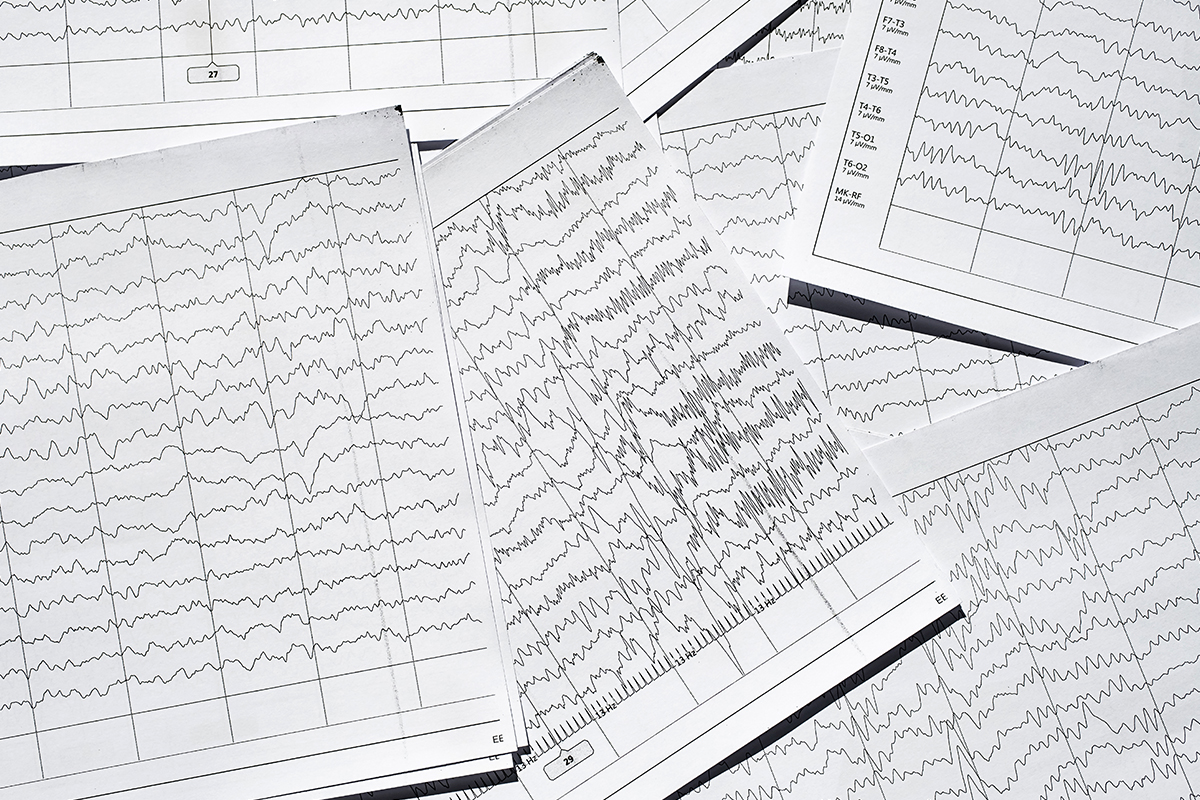
The History of Neurofeedback: Part II
The History of Neurofeedback: Part II
Ari Goldstein, Ph.D.
Educational Psychologist
For far too long, neurofeedback has been viewed as a therapy based more on wishful thinking than science. Perhaps this is because early in its history – in the 1960s and 70s – neurofeedback attracted the attention of those pursuing spiritual growth as well as patients seeking non-drug treatments for various brain conditions. Somehow, neurofeedback became associated with therapies outside the realm of established scientific inquiry.
Yet, as we indicated in our last blog, this incredible, drug-free therapy is the product of decades of well-documented research on brain function conducted by highly respected scientists. Starting with Hans Berger’s revelations about the existence of brain waves during the 1920s, scientists around the world have been exploring how this discovery could be used to treat disorders related to brain function.
The second chapter in this series features a member of next generation of neurofeedback innovators, Barry Sterman, PhD., at UCLA. It was Sterman who first used neurofeedback therapy to treat epilepsy. Later, Dr, Joel Lubar built on Sterman’s work to develop a new protocol for treating ADHD. Both of these gifted scientists, along with Dr. Joe Kamiya, Elmer and Alice Green and others, were continuing the work of previous groundbreaking researchers like Ivan Pavlov
In fact, Sterman’s first neurofeedback experiments were inspired by the work of Ivan Pavlov.
Pavlov was a Russian physiologist known primarily for his work in classical conditioning. In the 1880s, he discovered that salivation, an automatic response, could be triggered in a dog not only by the sight and smell of food, but also by the sight of non-edible things the animal had learned to associate with food.
Dr. Sterman tried a similar experiment on cats.
Taking a cue from Hans Berger, the pioneering scientist who discovered brain waves, Sterman restructured Pavlov’s experiment using 30 cats as subjects. During the course of the experiment he measu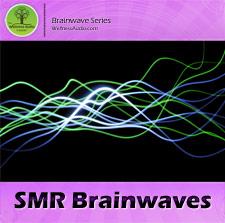 red the brain activity of each animal with an EEG. After withholding food from the cats to stimulate their appetite, he put each one into a chamber that was empty except for a lever and an empty bowl. Whenever the cat pressed the lever, a mixture of chicken broth and milk filled the bowl. All of the cats quickly mastered pressing the lever to get food and Sterman moved on to the second phase of the experiment.
red the brain activity of each animal with an EEG. After withholding food from the cats to stimulate their appetite, he put each one into a chamber that was empty except for a lever and an empty bowl. Whenever the cat pressed the lever, a mixture of chicken broth and milk filled the bowl. All of the cats quickly mastered pressing the lever to get food and Sterman moved on to the second phase of the experiment.
He introduced a tonal sound in the chamber as a background to the empty bowl and lever.
If the cat pressed the lever while the tone sounded, nothing happened. However, if the cat waited for the sound to stop before pressing the lever, broth would fill the bowl. Sterma n discovered that all of the cats would go into a state of extreme concentration – perfectly still but extremely alert – until the sound stopped, signaling that they would earn a reward by pressing the lever. The singularity of this behavior was reflected in the cats’ EEGs taken during this period. It showed that their brains recorded a sensory motor rhythm (SMR) frequency of 12Hz to 15 Hz while they were waiting for the tone to stop. This frequency indicates a high degree of focused concentration.
n discovered that all of the cats would go into a state of extreme concentration – perfectly still but extremely alert – until the sound stopped, signaling that they would earn a reward by pressing the lever. The singularity of this behavior was reflected in the cats’ EEGs taken during this period. It showed that their brains recorded a sensory motor rhythm (SMR) frequency of 12Hz to 15 Hz while they were waiting for the tone to stop. This frequency indicates a high degree of focused concentration.
The next phase of the experiment: See if the cats could enter SMR state at will.
Again, Sterman attached each cat to an EEG. This time he waited for the animal to produce the SMR frequency for at least half a second before giving it some broth and milk. Eventually, the cats learned that they would be rewarded for producing this frequency and all of them did so regularly. In 1967, Sterman published these amazing findings in medical journal Brain Research.
Working on an unrelated project led Sterman to an even more startling discovery.
As impressive as Sterman’s experiments were, their practical application to human brain therapy was only discovered after he worked on a very different research project commissioned by NASA. It seems that whenever astronauts or NASA workers were exposed to monomethyl hydrazine (MMH), the fuel need to propel rockets into space, they suffered hallucinations, bouts of nausea, epileptic fits and even death. NASA hoped that Sterman could learn something about the fuel’s effect on the brain that would help prevent or alleviate this problem.
Using 50 cats for this study, Sterman wired each one in turn to an EEG before injecting them with 10 mg of MMH and measuring their reaction to it. In every case, within a few minutes of the injection the cat vomited, salivated, panted and was clearly in distress.
After an hour, 40 of the cats suffered grand mal epileptic seizures. But ten others did not.
Apparently, the brains of these ten cats were strong and healthy enough to resist seizures. In fact, they suffered no further ill effects from the rocket fuel after their initial discomfort. Sterman quickly realized that the ten “super” cats belonged to the group of 30 whose brains produced an SMR frequency. He concluded that their previous conditioning had functionally and physically altered their brains, making them immune to the seizures suffered by the other cats.
In cats, epileptics or astronauts, EEG training can reduce seizures.
Once Sterman realized that cats could be conditioned to resist seizures, the next step was to see if the same training would work with people. He began by connecting human epileptics to neurofeedback equipment that was programmed to flash a green light when the subject’s brain produced a SMR frequency and a red light when it didn’t. After a prescribed number of sessions, patients were able to keep the green light on and the red light off most of the time. Experiments later revealed that neurofeedback training could produce up to 65% reduction in grand mal seizures. This was just the kind of result NASA had been hoping for. Over the years, NASA has used neurofeedback in training programs to improve a pilot’s ability to concentrate even in highly stressful situations.
Barry Sterman is still working in the field.
Dr. Sterman is now Professor Emeritus at UCLA in the Neurobiology and Biobehavioral Psychiatry departments. The work he did in over fifty years ago helped pave the way for the use of Neurofeedback to treat many brain conditions today. Dr. Sterman has produced over 100 peer-reviewed articles, contributed chapters to more than 30 books and written six books on operant conditioning in animals and humans, epileptiform and sleep brain behaviors. He also lectures frequently and is especially sought after as a lecturer on neuromodulation.
And neurofeedback is being used to treat a wide range of brain conditions today.
Over the last decade, advanced research on the brain has provided more evidence that neurofeedback is highly effective not only for treating epilepsy and ADHD, but also, post-traumatic stress disorder, traumatic brain injuries and more.
In our next chapter, we’ll cover how the latest developments in brain research have reawakened scientific interest in neurofeedback and earned it a significant amount of support from such prestigious medical organizations as the American Pediatric Association.
In the meantime, if you’d like to learn more about how neurofeedback can help depression, anxiety, Attention Deficit Disorders (ADD ADHD), post-traumatic stress disorder and more please contact us for a consultation at your earliest convenience.
Learn More
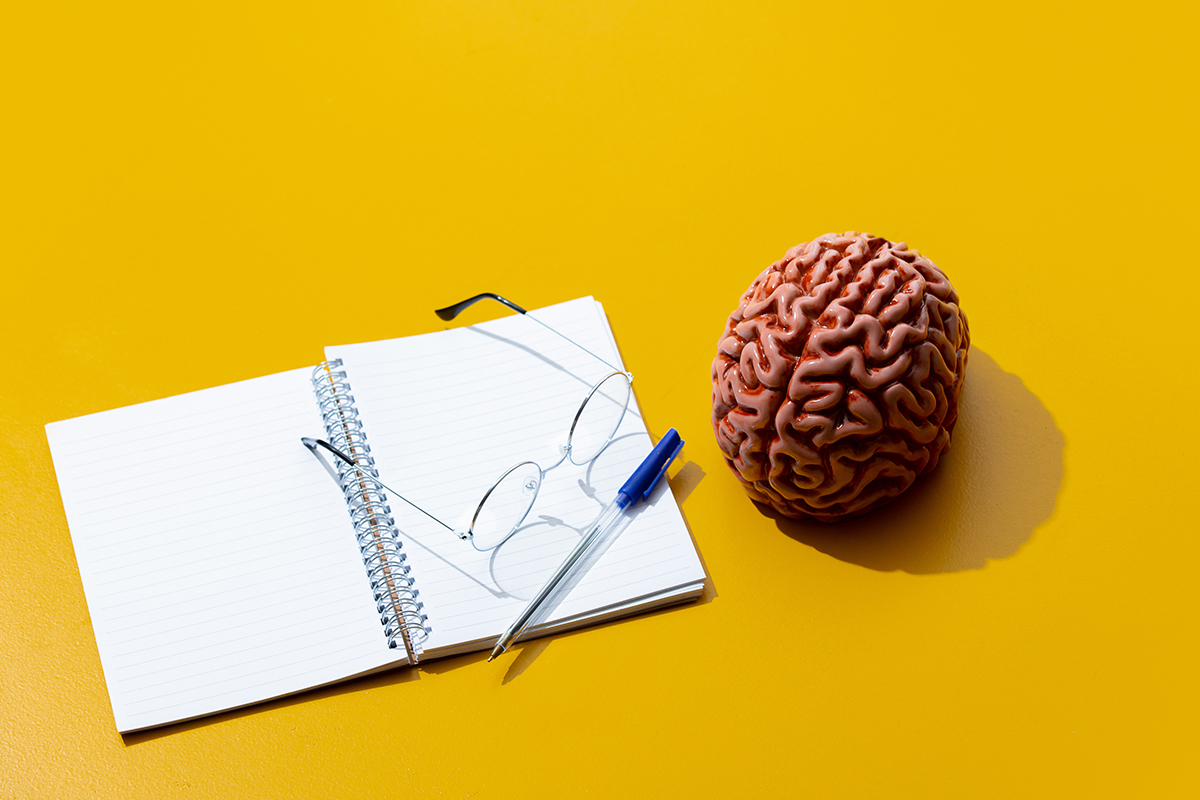
The History of Neurofeedback: Part I
How does Neurofeedback work? Why is it so effective in treating brain conditions as varied as ADHD, traumatic brain injury, seizures and learning disabilities? And so on. In the interest of answering these and other questions, we thought we’d start with the history of this remarkable, non-medicinal treatment for the brain known as Neurotherapy now available in Chicago.
Learn More
Summer Classes Forming Now
Cognitive Solutions offers one on one and group programs in the summer aimed at developing students’ processing abilities, executive functions, and academic weaknesses. Our programs are highly individualized, and designed to help our students reach their full potential. Our programming is designed for students diagnosed with Attention Deficit Disorder (ADD or ADHD), learning disabilities (dyslexia, dysgraphia, dyscalculia), or executive functioning difficulties in Chicago, Illinois. Contact us at 773-755-1775 or info@helpforld.com for more information on our summer remediation programs.
Learn More
The Screen Time Debate
Screen Time: How Much Is Too Much?
Ari Goldstein, Ph.D.
Look around in any waiting room, restaurant, or public space filled with children who are required to wait for a period of time. What percentage of those children are engaged in conversation or play? How many are reading quietly to themselves? Now, how many are hyper-focused into a screen? What is it about these devices that so engages children and creates this need? To better understand this, we need to explore both the biological and the behavioral underpinnings of this ubiquitous trend.
How many of us, as adults, is guilty of constant engagement with our screen devices. Of course we deem much of it “work”, including our facebook surfing and engagement with a range of vapid entertainment. Who do our children look to as role models for their behaviors?
From the perspective of the brain, screen devices are awesome! They provide fast paced stimulation to the brain, and frequently contain a series of rewards or level development that further engage the brain. This rapid stimulation tells the brain to release more “feel good” neurochemicals such as serotonin.
Parents come in to my office on a daily basis expressing concerns over their children’s constant need to be engaged with a screen of one form or another. This is a double edged sword. Electronic communication is everywhere, and the adults of the future will need to be proficient in their usage and able to adapt with the technology. Children model their parents and friends behaviors, and everyone around us is engaged with a screen of some sort. While as parents we need to manage the amount of screen time our children have, we need to be aware of the benefits of some of the programs as well as the importance of technological literacy. The rule in my home is no screen time during the week unless it is directly related to homework. Then on the weekends we allow our kids a couple hours per day to engage in the screens of their choice. Most of the research done on the subject agrees that less than 2 hours per day of average screen time is not associated with any negative behavioral or cognitive patterns.
Certain forms of screen engagement can also be very positive, and challenge cognitive skills. There are several very good research based online programs designed to develop a range of cognitive skills, including executive functioning, memory, and attention. Many games also require a high level of strategy, planning, and visual spatial problem solving (think Minecraft). Encourage your children to engage in the types of games which require them to focus, think, and plan ahead.
By managing the amount of screen time and the content itself, this entertainment method can become a powerful tool to sharpen your child’s mind and ensure their technological proficiency as they enter adulthood.
At Cognitive Solutions Learning Center in Chicago, we work with children and adult who have been diagnosed with a range of learning disabilities (Dyslexia, Dyscalculia, Dysgraphia) and Attention Deficit/Hyperactivity Disorders. Our approach includes a range of non-medicine based treatments and interventions, and we work with parents to ensure that their children can grow to their full potential.
Learn More
What Exactly Is A Learning Specialist?
Learning Specialist – Isn’t that just a tutor?
By Ari Goldstein, Ph.D.
Tutors have existed for as long as man. Elders helping the younger generation learn the skill sets necessary to survive in their environment. Of course, early tutoring focused more on gathering food and creating shelter than on memorizing math tables. Fast forward to our test driven and memorization based school curriculum. Students have to absorb and repeat mountains of information on a regular basis. They have to work quickly, efficiently, and a strong competitive sense emergences in most classrooms from an early age. Most parents feel their children need to keep up, and some are concerned with even “Average” performance. As a result, Americans spend billions of dollars each year for tutoring support for their children.
A tutor is a very useful tool for many students. Tutors help their pupils learn facts, study for tests, and become more fluent and efficient with a range of academic tasks. But what happens when those academic deficiencies are driven by difficulties processing information? Does the tutoring work? My clinical experience would indicate that often it does not. When students come to Cognitive Solutions Learning Center in Chicago, many are initially assessed to better understand their processing and functioning through a comprehensive evaluation. Having information about how the brain processes information is highly useful when planning how to best help a student remediate areas of processing difficulty. Specialized interventions can be designed which are aimed at developing a student’s underlying cognitive and processing deficiencies. This makes the process of tutoring much more targeted and effective.
Tutors come in all shapes and sizes, with a wide variance in education, background, and experience. They range from high-school and college students looking to make some extra money to retired teachers who love helping children, and everywhere in between. How well a tutor can help a student often depends on their experience and their ability to develop a strong rapport. But what they can do is often limited. Without understanding of and intervention with underlying processing deficiencies, many students will not make the expected levels of progress they are working so hard to gain. This frequently leads to frustration on the part of the student, the tutor, and the teachers and parents.
A learning specialist is someone who typically possesses a minimum of a Master’s Degree in a special education related field. The have extensive experience reading and interpreting psychoeducational and neuropsychological evaluations, and are able to use these documents to create intensive and effective remediation programs. Many work as special education teachers in the school system, and develop private interventions for students in after-school hours. Learning specialists work to strengthen underlying brain processing, at the same time helping the student develop a strong academic skill base.
A student who has difficulty reading will often begin work with a tutor. They will typically work to develop stronger fluency, decoding, and compression skills. But what if the student isn’t making progress in this work? What if all the repetition and multi-sensory teaching are not working? That is where an understanding of processing can better assists a learning specialist in their work. Many students who struggle to read have some form difficulty with their their auditory, visual, or executive processing systems. A learning specialist will work to develop reading skills in a manner similar to a tutor, however they will also design and implement a targeted intervention to address any underlying processing deficiencies. This might include auditory processing work, expressive or receptive language development, visual tracking and visual motor work, or executive skills development. Strengthening how the brain processes information while at the same time developing academic skills makes for a powerful and effective remediation program. The same processing difficulties can be true for students with a range of learning disabilities, including dyslexia, dysgraphia, and dyscalculia. Often times, difficulties processing information through one of the systems mentioned is a strong underlying factor in their struggles to learn. Students diagnosed with Attention Deficit Hyperactivity Disorder (ADD/ADHD) often have executive deficiencies that can be strengthened through targeted work with a learning specialist.
While tutoring is beneficial for many students who simply require some extra practice or “brush up” on skills, it is often ineffective for students who struggle to develop learning skills. These students frequently see far better outcomes when their academic interventions are designed more broadly to target and strengthen areas of their brain that aren’t properly processing the world around them.
At Cognitive Solutions, many students come to us after multiple unsuccessful attempts at tutoring. Our learning specialists create highly individualized remediation plans, and work with students to strengthen academic functioning, processing capacities, and self-esteem. For more information on Cognitive Solutions Learning Center in Chicago, please feel free to visit us online at www.helpforld.com.
Learn More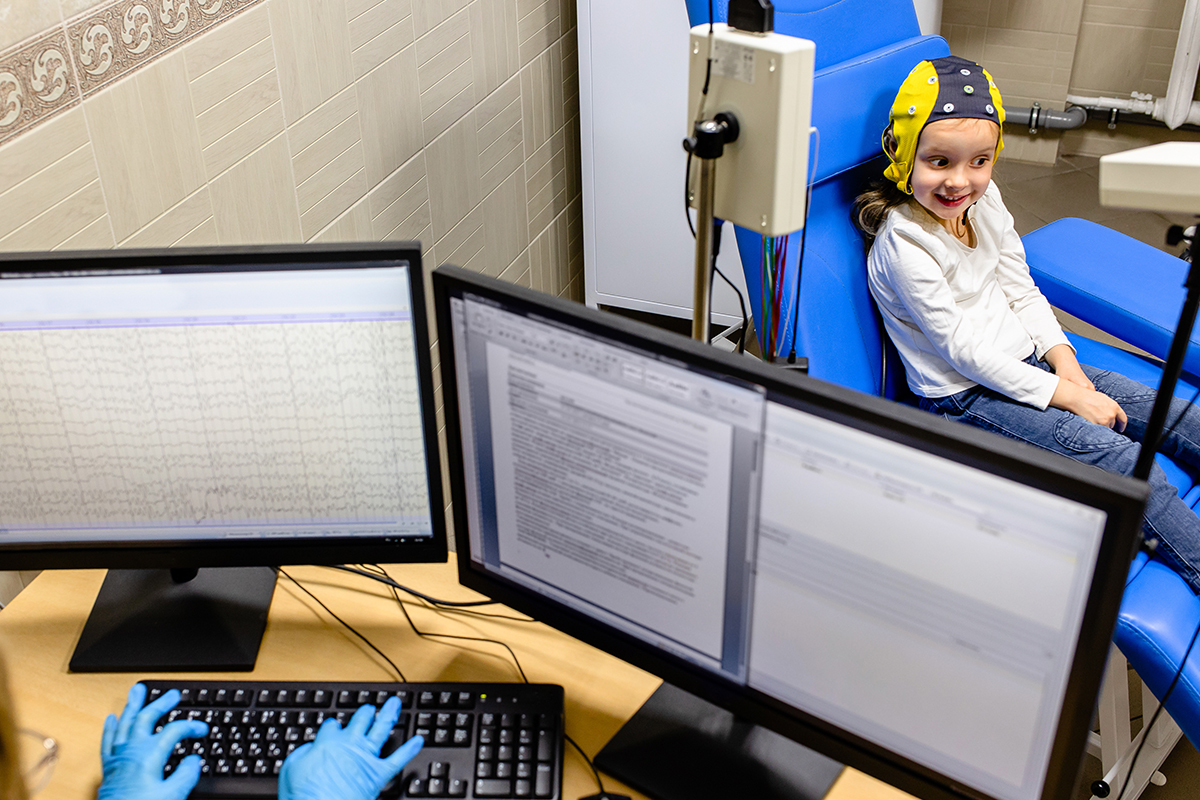
Neurofeedback: Science or Shamanistic Ritual?
Neurofeedback: Science or Shamanistic Ritual?
By Ari Goldstein, Ph.D.
The human brain is a fascinating organ that constantly seeks to improve itself. The capacity of the brain to grow and develop in response to environmental stimuli is magnificent. From trepanation to phrenology, behaviorism to psychoanalysis, man has sought to better understand this splendid organ. As we begin the 21st century, our knowledge of the brain continues to grow and develop at a rapid pace. Technology allows us to understand and improve how the brain functions in manners never before thought to be possible. One of the ways current science allows us to understand how the brain functions is through analysis and normalization of the electrical patterns created by the brain. The process of reading and analyzing the brain’s electrical patterns is known as a Quantitative EEG. The data provided through this process helps individuals and their clinicians understand how their brain is functioning and processing information, thereby allowing for much more targeted clinical interventions.
When I was a psychology student in College, we were taught that the brain does not grow much in adulthood. As the understanding of the brain and neuronal functioning has increased, we now know that the brain is highly capable of adapting and growing even into old age if given the right stimulus. The process of EEG Neurofeedback involves teaching the brain to grow and develop more efficient patterns of functioning. Through a series of games and activities played while connecting their brain to the computer, individuals learn to better self-regulate and improve the efficiency of their brain function.
I was first introduced to EEG Neurofeedback by Dr. Sam Effarah, and my thinking around learning and the brain changed dramatically. I was able to very clearly see quantitative data on how the brain was functioning, and saw how we could gain an amazing amount of very functional and actionable knowledge from a Quantitative EEG assessment. I also began to see the tremendous value in teaching people to regulate their own functioning through neurofeedback in a much more meaningful and lasting way. Clinicians could very clearly see patterns in the brains of individuals diagnosed with ADD/ADHD, learning disabilities, anxiety, depression, and autistic spectrum disorders that were different from the average brain. Often times, the frontal lobe of the brain in individuals with attention difficulties has far too much of the slow wave known as “Theta”. This can cause a state of cognition known in scientific terms as “La La Land”. A fast spindly wave known as “High-Beta” was often seen throughout the brain of those with hyperactivity and anxiety. Disconnections between areas of the brain that process auditory and visual stimulus often become apparent through the Quantitative EEG in those diagnosed with learning disabilities.
When we began using EEG data to drive some of the work we do at Cognitive Solutions, the level of skepticism among our colleagues and patients was high. It was almost as if we were practicing some form of shamanistic ritual to help people. As time went on, more and more people began to try it out. We had patients referred to us with a range of symptoms, including attention disorders, learning disabilities, anxiety, depression, and autism spectrum disorders. Most patients reported improvement in a range of symptoms after completing only a few sessions. Some took more time to see improvement, but those who stuck with it generally reported significant improvement in their functioning over time.
The research on Neurofeedback is strong (isnr.org). While detractors would note the lack of double blind studies, a host of solid research studies into neurofeedback show quantifiable evidence of improvement for a range of brain based dysfunctions. Anecdotal cases can be found all over the world for individuals who have seen improvement for a range of symptoms affecting their daily functioning. The American Psychological Association has consistently given higher and higher efficacy marks to this treatment as more and more solid research has been conducted.
At Cognitive Solutions Learning Center in Chicago, we have worked with thousands of patients using neurofeedback over the past fifteen years. Most have seen tremendous benefits in quality of life as a result of this treatment. As I have watched the science catch up to what I have seen personally in our clinic, I am glad to have discovered this amazing intervention tool. From shamanistic ritual to true science, it appears that neurofeedback is a viable and drug free option for many patients to treat a range of brain based symptoms.

HELPING CHILDREN AND ADULTS REACH THEIR FULL POTENTIAL.
We help individuals with Attention Deficit Disorder (ADD/ADHD), Learning Disabilities (Dyslexia, Dysgraphia, Dyscalculia), Autism, Anxiety, and Depression in Chicago, IL. Our programs include neurofeedback, educational therapy, psychotherapy, and psychoeducational and neuropsychological testing.
Learn More
GET IN TOUCH
Our Chicago office is located at:
2409 N. Clybourn Ave.
Chicago, IL 60614
(773) 755-1775
info@helpforld.com
Read More…
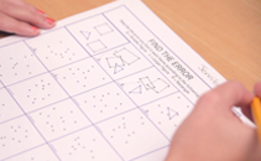
ATTENTION DEFICIT DISORDER (ADD/ADHD) AND LEARNING DISABILITY TESTING
– Neuropsychological Testing
– Psychoeducational Testing
– Dyslexia Testing
– ADD/ADHD screenings
– Standardized Examination Accommodations Testing

TREATMENT AND THERAPY PROGRAMS FOR LEARNING DISABILITIES, ADD/ADHD, EXECUTIVE FUNCTIONING, ANXIETY, AND DEPRESSION
Our programs are designed to help you reach your full potential! At CSLC we take careful measures to assess your needs and apply them to one of our unique programs.
– Neurofeedback
– Educational Therapy and tutoring
– Executive Functions Training
– Psychotherapy
Read More…

ABOUT LEARNING DISABILITIES AND ADD/ADHD
A learning disability, such as dyslexia, dysgraphia, or dyscalculia, is defined as a disorder in one or more of the basic psychological processes involved in understanding or in using spoken or written language, which may manifest itself in an imperfect ability to listen, think, speak, read…
Learn More
Natural Treatment For Attention Deficit Disorders Without Medication
When I was growing up in the 1970’s, there were always boys who were hyper. They couldn’t control their behaviors, responded impulsively to everything placed in front of them, and acted as if driven by little motors constantly running full speed inside their bodies. There were also boys who stared off into space on a regular basis, seeing a whole movie playing behind their eyes. There were girls who flitted around the room like social butterflies, and those who gazed out the window seeing a movie of their own.
Learn More
Thoughts on Executive Functioning Skills
Thoughts on Executive Functioning Skills
By Ari Goldstein, Ph.D.
When I first began teaching special education in the early 1990’s, the term executive functioning was unheard of. As a young teacher, I very quickly saw the importance of developing underlying cognitive skills to help my students learn more efficiently. They benefited tremendously from learning better strategy usage, time management, organization, and self-regulation skills. Over time, I developed a series of exercises and activities designed to strengthen these aspects of functioning in the classroom. What I found was that by developing their underlying cognitive skills and meta-cognition, I was able to help my students become better learners. We had no terminology or training programs for this, it was just good psychoeducational practice.
As I transitioned into private practice in the late 1990’s, I continued much of this work in a one on one fashion with the students I was tutoring. Around the year 2000, the term executive functioning began to emerge with some popularity in psychology and education circles. As I read more and more research on the subject, I began to understand that the underlying skills I had been working on with my students all along were, in fact, executive functioning skills. Good teachers have been working to develop these skills since the dawn of teaching, but finally there was a terminology and construct associated with what they had been doing in the classroom. I became so interested in the subject that I spent a good portion of my Ph.D. work investigating executive skills and their impact on learning and functioning.
Fast forward fifteen years. Executive functioning is now a buzz word heard throughout the academic community. Every parent, teacher, and school is now concerned with executive functioning. As a practitioner, I see this as a wonderful development. Unfortunately in our fast paced and testing based school system, the focus is primarily on test scores. We expect students to memorize and regurgitate information, but we do very little to develop their underlying self-monitoring, problem solving, and regulation skills. Schools are now more aware of executive functions, and their crucial impact on learning and problem solving throughout the life span. Many private tutors also work on executive functioning, however too often the focus is very heavy on organization skills and time management, with little work done to develop underlying frontal lobe functioning (Executive skills make their “home” in the frontal lobe of the brain).
Executive skills develop at different rates in different children. However, true executive difficulties do exist in many students, and tend to be even more prevalent in students with learning disabilities or disorders of attention (ADD/ADHD). Effective development of executive skills lies in not just teaching students how to organize themselves, but helping them develop into stronger problem solvers with better self-regulation skills. This can be done through a range of remediation programs, including Feuerstein’s Instrumental Enrichment, Quantitative EEG training (neurofeedback), meditation practice, and one on one skill based work designed specifically to strengthen frontal lobe functioning.
Our learning specialists at Cognitive Solutions take a very individualized approach to the development of executive skills. We work one on one with students to help strengthen their frontal lobe functioning, and help them develop a tool-belt of skills for stronger school based functioning. This differs from traditional tutoring, which tends to focus on the development of academic skills without work aimed at developing underlying areas of cognitive and information processing.
For more information on Cognitive Solutions Learning Center, please visit us online at www.helpforld.com, or feel free to contact us at 773-755-1775.
Learn More
